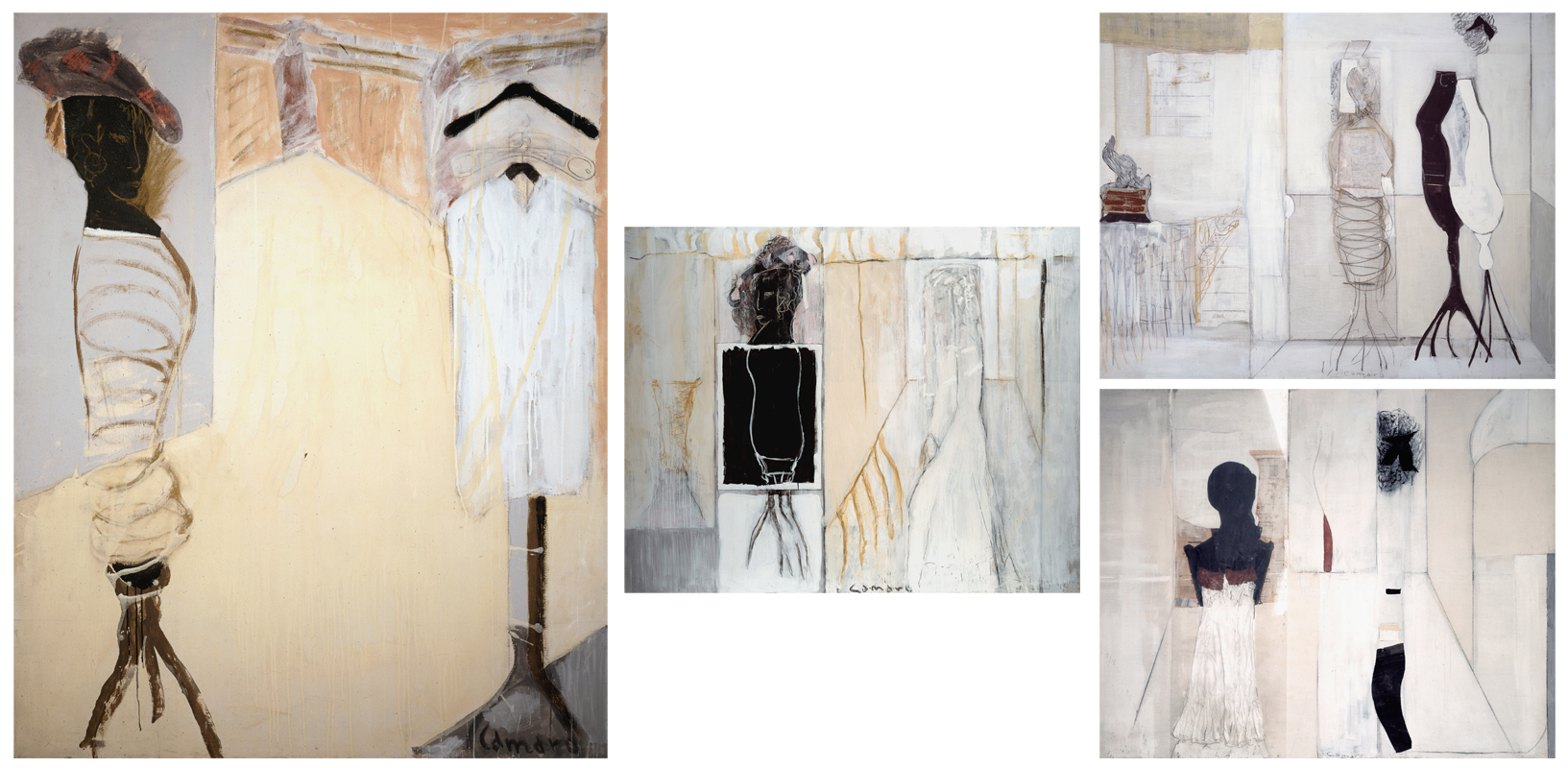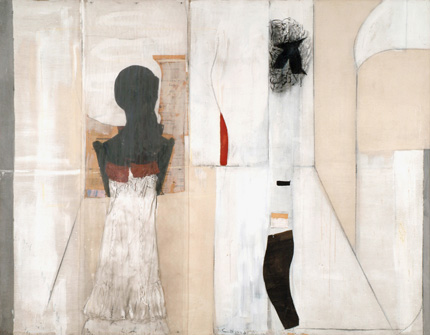#38

In einem hellen, menschenleeren Raum befindet sich rechts im Vordergrund ein Kleiderständer, an dem ein weißes Hemd hängt. Links daneben steht eine dreibeinige Kleiderpuppe mit einem schmalen Profilgesicht und einem opulenten Hut. Das Gesicht und die „herrschaftliche Pose der durchscheinenden Lady scheint von (Lady Curçon,) der legendären Vizekönigin Indiens inspiriert zu sein“ und findet sich ebenfalls in dem Werk „Die reflektierte Braut“*.
Requisiten, wie Kleiderständer und Kleiderpuppen, sind in einer Reihe von Arbeiten Camaros zu entdecken, wie im „Schaufenster in der Potsdamer“ und „Pythia“, beide von 1980, oder in „Die reflektierte Braut“ von 1984. Kleiderpuppen erhalten vermenschlichte Charakterzüge, werden zu stille Musen oder Marionetten und lassen das Motiv der „femme maison“ der Künstlerin Louise Bourgeois von 1947 aufscheinen.
(*Christiane Heuwinkel: Die Welt des Scheins. Ein Camaro-Alphabet, in: Alexander Camaro. Die Welt des Scheins, 2022, S.32.)
[Alexander Camaro, Lady Curçon, 1984,
Mischtechnik, Acryl, Pastell auf Leinwand, 200×160 cm
Foto: Reinhard Friedrich © Camaro Stiftung /
Alexander Camaro, Die reflektierte Braut, 1948, Mischtechnik, Acryl, Pastell auf Leinwand, 200x250cm
Foto: Angelika Weidling © Camaro Stiftung /
Alexander Camaro, Schaufenster in der Potsdamer, 1980, Mischtechnik und Textil-Collage, Plexiglas, Acryl auf Leinwand, 200x250cm
Foto: Gerhard Haug © Camaro Stiftung /
Alexander Camaro, Pythia, 1980, Collage, Acryl, Pastell auf Leinwand, 200x250cm
Foto: Hermann Kiessling © Camaro Stiftung]
[EN]
In a deserted room, a clothes rack stands on the right in the foreground, with a white shirt on it. To the left we discover a three-legged mannequin with a narrow profile face and an opulent hat. The face and „the majestic pose of the translucent lady seems to be inspired by (Lady Curçon,) the legendary Viceroy of India“ and is also found in the art work „The reflected bride“.
Props, such as clothes racks and mannequin can be found in a number of art works by Alexander Camaro, such as „show windows at the Potsdamer“ and „Pythia“ (both from 1980), or „the reflected bride“ from 1984. Mannequins get humanized character traits, become silent muses or puppets, and contain the motif of the „femme maison“ by the artist Louise Bourgeois from 1947.

